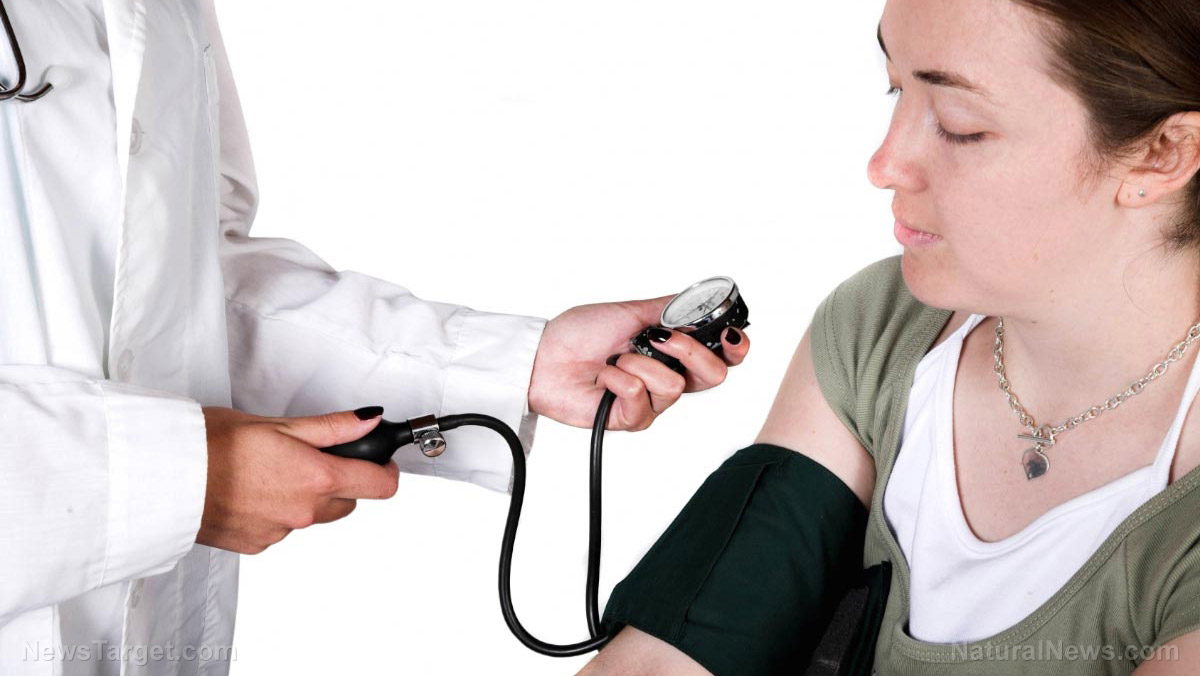Researchers discover major flaw in routine blood pressure readings, leading to misdiagnoses
08/13/2025 / By Lance D Johnson

Imagine a world where a simple check-up can mean the difference between life and death. Every time you step into a doctor’s office, the arm cuff around your bicep isn’t just measuring your blood pressure — it’s meticulously calculating your risk of heart attacks and strokes. But what if the numbers it spits out were, well, a bit off? Picture the misplaced alarm clocks, the neglected medications, the lives put on hold or in danger. It sounds dramatic, but it’s a reality many of us might not even know about. The familiar arm cuff, trusted for decades, might be quietly misleading us. Today, groundbreaking research from the University of Cambridge is shining a light on a critical flaw in the way we measure blood pressure. This could be costing millions inaccurate diagnoses, and it’s time we pay attention.
Key points:
- Standard arm-cuff blood pressure tests can read up to 6 points too low, missing about 30% of people with high systolic blood pressure.
- The problem arises from a hidden drop in blood pressure in vessels below the cuff during the test.
- Simple adjustments, like redesigning cuffs or adjusting arm position, could greatly improve accuracy.
The hidden drop: Why the numbers can be misleading
Blood pressure readings are vital for your health, especially during moments of high intensity — like childbirth, heart surgery or stroke prevention. Yet, the daily routine of measuring blood pressure in a doctor’s office might not be as reliable as we once thought.
The heart pumps blood through a network of vessels. When a cuff inflates around your arm, it momentarily squeezes the artery shut. This is where the trouble begins. According to Cambridge researchers Kate Bassil and Anurag Agarwal, this blockage causes a sharp drop in pressure in the vessels beyond the cuff — what they call the “downstream” pressure. As the pressure in these vessels falls, the cuff underestimates your actual blood pressure.
Think of it like a narrow river where a dam is built, causing the water to back up but also creating a quieter, less visible flow downstream. The lower that downstream pressure drops, the more the cuff’s reading deviates from your true blood pressure. This discrepancy can mean the difference between a diagnosis of high blood pressure and a clean bill of health. It’s not just a small technicality; it’s a wake-up call for millions who might be living with undiagnosed high blood pressure.
High blood pressure is the leading cause of premature death globally, and it’s often silent until complications arise. A small underestimation of blood pressure can push someone from the “high” category into “normal” territory, potentially delaying medical interventions. Every year, this misreading could be leaving those who desperately need early treatment waiting longer than necessary.
Digging deeper: The experiment that unveiled the truth
In a groundbreaking experiment, Bassil and Agarwal recreated the conditions inside the human arm during a blood pressure check. Previous studies had tried to understand the errors in blood pressure readings, but they often relied on simplified models that couldn’t fully replicate the real-world scenario. This time, the researchers decided to address the elephant in the room: the way the artery fully collapses when the cuff is inflated.
They built a custom experimental rig featuring flexible silicone tubing that mimics a real artery, able to fully close under pressure. The system allowed them to independently control the pressure on both sides of the “artery”:
- Upstream pressure: Represents the heart pumping blood into the arm.
- Downstream pressure: Represents the vessels beyond the cuff in the forearm.
By adjusting these pressures separately, they could mimic exactly what happens when the cuff squeezes the artery shut and downstream pressure drops. Their results revealed a clear pattern: the lower the downstream pressure, the greater the underestimation of systolic blood pressure. In their tests, this underestimation could be as much as 9 to 10 mmHg when downstream pressure was at its lowest.
Moreover, the study highlighted why standard cuffs tend to underestimate blood pressure. A regular cuff doesn’t apply pressure uniformly along its length; it’s tighter in the middle and looser at the edges. When downstream pressure is low, this uneven squeeze keeps a longer stretch of the artery closed for longer, delaying the return of blood flow and leading to inaccurate readings.
A call to action: Making blood pressure testing more reliable
The implications of this research are vast. A large analysis of 74 previous studies confirms that cuff-based measurements on average underestimate systolic blood pressure by about 5.7 points. This systematic underestimation means that about 30 percent of people with systolic hypertension could be going undiagnosed.
What’s more, the arm-cuff method is the “gold standard” for checking blood pressure, and its inaccuracies ripple through every other device. This includes the automatic machines in pharmacies and clinics, which are all calibrated against the arm cuff.
The Cambridge team proposes several solutions to improve accuracy:
- Redesigning cuffs to apply uniform pressure along the arm.
- Adjusting arm position to help achieve more accurate readings.
- Applying small correction factors based on age, arm size, and other characteristics.
These simple adjustments could make a world of difference. By catching high blood pressure early, we’re not just adjusting numbers on a screen — we’re safeguarding lives. Considering the everyday anxiety that accompanies a positive diagnosis, we must strive to ensure that the red flags are truly necessary. Blood pressure readings should be a trusted compass, not a confusing tool.
Sources include:
Submit a correction >>
Tagged Under:
artery function, blood flow, blood pressure, breakthrough, cardiovascular diseases, cardiovascular health, diagnostic tools, discoveries, health science, heart disease, heart health, hypertension, misdiagnosis, patient outcomes, precision medicine, real investigations, research
This article may contain statements that reflect the opinion of the author
RECENT NEWS & ARTICLES
HealthScience.News is a fact-based public education website published by Health Science News Features, LLC.
All content copyright © 2018 by Health Science News Features, LLC.
Contact Us with Tips or Corrections
All trademarks, registered trademarks and servicemarks mentioned on this site are the property of their respective owners.




















